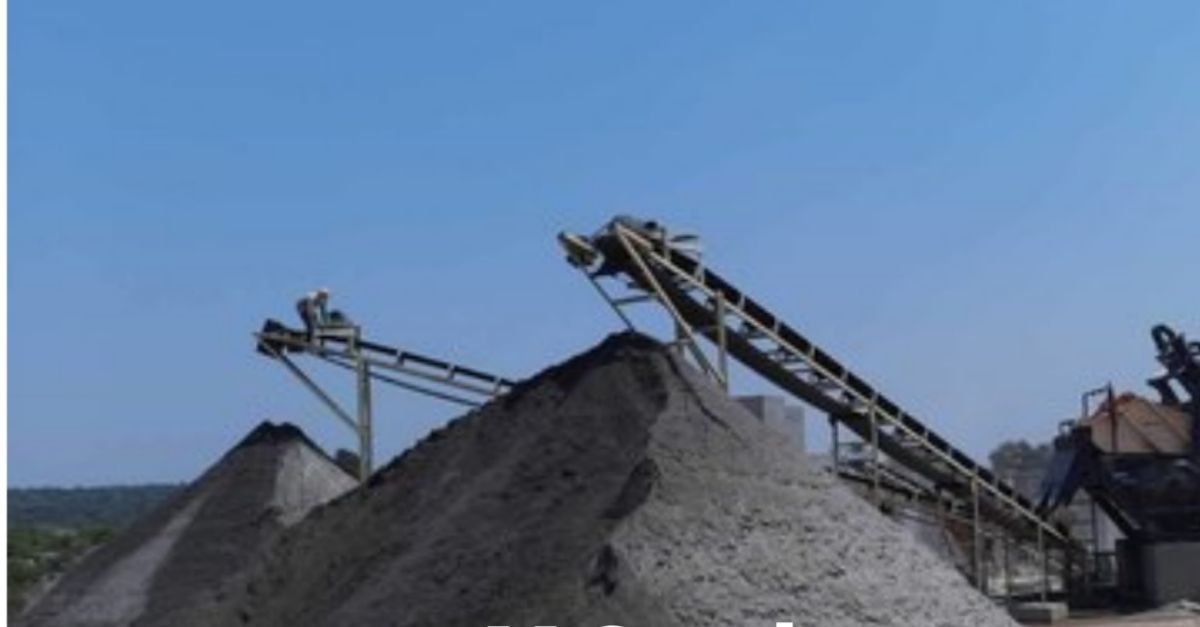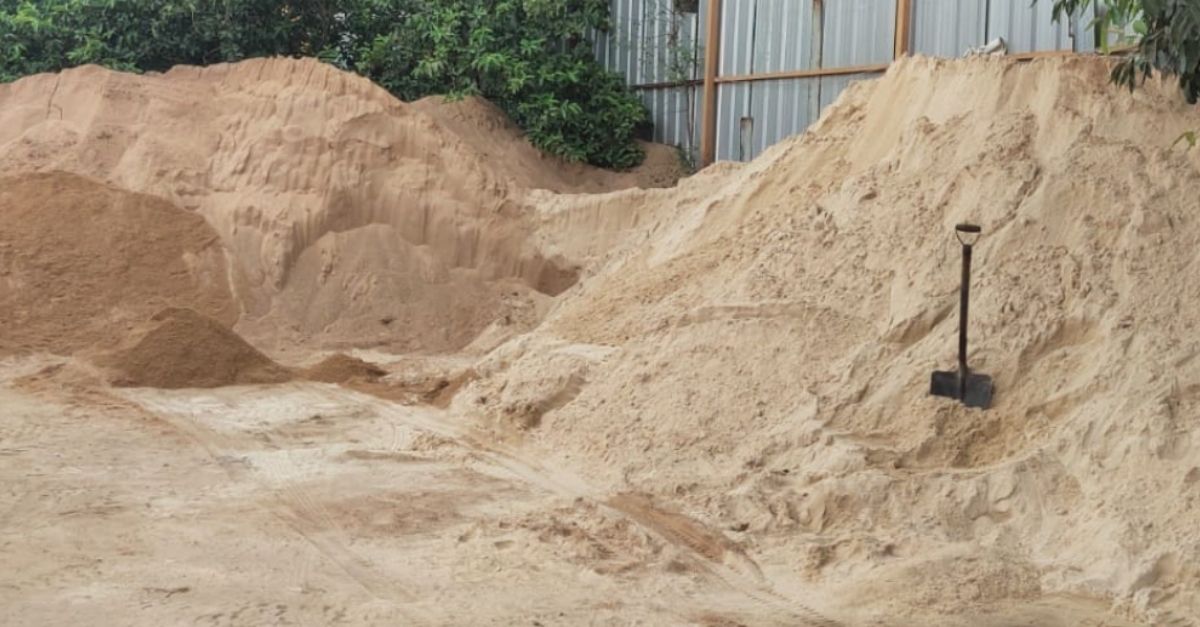Be it a residential or a commercial site, sand is an important component for the construction of any building. When it comes to choosing between M sand vs river sand, most people cannot make an informed decision. A building is not mindless use of brick and mortar. It involves careful selection of the right material in proper proportions to create a sturdy structure and long-lasting.
So, here’s a guide to help you understand these two types of sand. And also their differences vis-a-vis their physical properties, workability, and affordability.
First thing first:
What is M Sand/Manufactured Sand/Robo Sand?

The full form of M sand is manufactured sand. It is also known as Robo sand or artificial sand. It is manufactured by crushing hard stones, mainly granite or rocks to fine particles in a factory or quarry. Comparing M sand vs river sand, it is gradually gaining popularity as a substitute for river sand for almost all constructional purposes. Different types of M sand, depending upon their usage, can be manufactured by grading them based on their granule thickness. Here are the three stages involved in the manufacturing of M sand.
The manufacturing process of M sand
1. Crushing
It is a two-stage process. First, the hard stones are crushed to form aggregates. This stage involves the use of jaw crushers, cone crushers, and vertical shaft impact (VSI) crushers. Then, Rotopactor crushes the aggregates into the fine sand particles of the desired grain size.
2. Screening
Screening removes the dust particles from the crushed aggregates.
3. Washing
Washing separates the micro-fine particles and also prepares sand for concreting and plastering.
Three different varieties of M sand (for varied applications/usages) can be formed using the same manufacturing process.
Three varieties of M-Sand
1. M-Sand for Concreting
This M-sand has a granule thickness (also called sieve size) of 150 microns to 4.75 mm. We mainly used it for concrete purposes. It meets the requirements of IS – 383:1970.
2. M-Sand for Plastering (also called P sand)
This M-Sand has a granule thickness/sieve size of 150 microns to 2.36 mm. We used it for wall plastering and tiling. It meets the requirements of IS – 1542: 1992.
3. M-Sand for Brick/Block Work
This M-sand has a granule thickness/sieve size of 150 microns to 3.55 mm. We used it mainly used for masonry work and brick or block laying. It meets the requirements of IS – 2116: 1980.
But sand is not only an artificial product. It is also available to us naturally. This sand is better known as River sand.
What is River Sand?

River sand is the sand naturally occurring on the river beds, seas, and streams. We used this sand traditionally for almost all construction purposes due to its easy availability. But because of high demand and over-extraction, it has started to pose a threat to the environment. Many countries have taxed and even banned the extraction of river sand for construction to check the depletion of this natural resource.
Since river sand is slowly becoming scarce, M sand is emerging as a vastly popular replacement.
But many people are still not sure whether artificial sand is a better alternative. Or is it a compromise on quality resulting from scarcity and ecological imbalances?
Digging a little deeper in detail and understanding the differences between M sand and river sand will indeed bring some clarity.
Difference between M sand vs River Sand
Basis the physical properties
Shape and texture
M sand has angular particles and a rough/coarse texture than natural sand. The natural gradation process makes river sand smooth and rounded. Manufactured sand requires more cement and water than natural sand to achieve workability.
Over-sized materials and marine products
M sand has almost zero oversized materials and marine products because it is artificially manufactured to the desired quality. In comparison, river sand has 1-6% of oversized material in pebbles, coal, bones. It is also 2-4% of marine products such as seashells and tree barks.
Silt and moisture content
While there is no silt content in M sand, it is usually 5-20% in the case of medium-quality river sand. We can consider silt content above 3% as unfit for concrete quality. Moisture content is also absent in the case of manufactured sand. At the same time, there is trapped moisture between the particles in the case of river sand.
Basis the workability
Concrete strength
As M sand is manufactured in a controlled environment, it is free from dust particles, silt, and oversized materials. The cubical-shaped particulars, proper gradation, and smooth surface texture provide greater strength and durability to the concrete. Some case studies have proved that the concrete produced with M sand can achieve much higher quality. It can have 6-9% higher compressive strength, 12-15 % higher flexural strength, and almost 30 % higher masonry strength.
Durability
M sand’s physical and chemical composition is more suited to withstand extreme climatic conditions. The proper gradation helps it achieve the right balance, thus ensuring smooth workability. Furthermore, the concrete defects such as bleeding, voids, segregation, and corrosion of reinforcement steel reduce significantly with manufactured sand.
Water-to-cement ratio
Manufactured sand requires a lower water-to-cement ratio. It reduces the efforts for concrete mixing. And also improves the concrete strength in its hardened state.
Basis the costs involved
Environmental costs
The burgeoning demand and overuse of river sand are causing unwarranted environmental hazards. Ground depletions, a threat to aquatic life, water scarcity, safety hazard to dams are just a few. The use of manufactured sand minimizes the need for natural sand. It thereby protects the rivers from unnecessary dredging. M sand also uses natural stones in its manufacturing process. But it still causes much less environmental damage than depleting the river banks of its natural sand.
Financial costs
Since river sand is only available in riverbeds and coastal areas, it is not cost-effective to carry it to far-off construction sites. In certain cases, the transportation of sand to the required locations shoots up the costs by 30% to 50%. It is due to higher carriage charges and increased volume losses. Know details about the costs of the products.
M sand Vs River sand | Final Verdict
Undoubtedly, we use the natural river sand for ages for almost all kinds of construction activities. But it is now one of the fast depleting natural resources. If we want to preserve it for the future, it is important to use the appropriate substitutes. Though there are a few challenges in using M sand, you can overcome them with proper planning. Most experts believe that M sand not only makes for an environmentally responsible and affordable choice, but it is also a superior alternative in terms of utility and durability. Click here to know more about other resources.

Leave a Reply